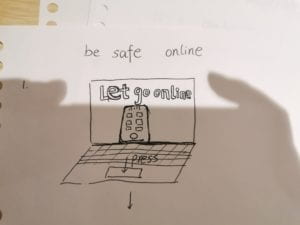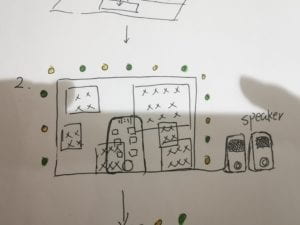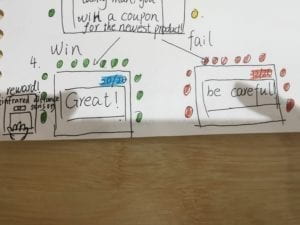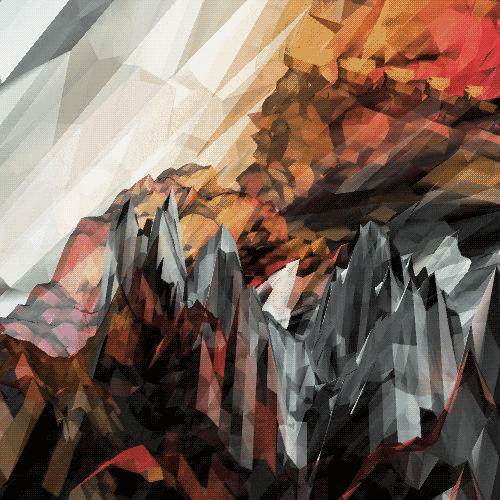Proposal 1: Our Planet
As from the research Vivien has done for the first stage, she has realized unsustainability/climate change is one of the most vital issues that the United Nations has addressed lately. Vivien would want to work on something that illustrates the outcomes of unsustainability. But in the project, we would also like to show how humans could participate in the process of lessening the harms of unsustainability. Ian is highly interested in doing something that requires collaborations among people. He has proposed an idea of encouraging four people to make some movements simultaneously for the project to function. If only one person participates in the process, the project will not provide an outcome. Thus encourages collaborations among people, even among strangers. We both are highly interested in each other’s ideas. And we have worked together to combine these two ideas into one doable thought. Then we have figured out that we would want to create a project that requires movements among several people to lessen the unsustainable global issue. For the movement part, we want to make it very specific. The participants need to physically use a shovel and plant trees to push back the time of the earth explosion. The faster they plant trees, the longer the earth would stay away from the explosion. However, if the participant chooses to work alone, then there is no way for him to get fast enough to beat the accumulated speed for several people. We would set the number in our codes to be ridiculously high to make sure that no individuals could accomplish this goal by himself. In this project, we want to raise people’s awareness of the harmful outcomes of unsustainability. However, we would like to highlight the positive effect that we can bring forth through the collaboration processes. Our targeted group of the audience would be everyone on this planet. Overall, the earth is everyone’s plant. We all have to take part in helping to solve the unsustainable issue.
References
https://climate.nasa.gov/causes/
Proposal 2: Ourscraft – Creating a World of Ours
The insight comes from the research Ian did for teamLab Borderless Shanghai and Vivien’s research that emphasize on impact to individuals. Ian went to teamLab last Friday. It is AMAZING. Ian wrote about the notion of “create the world together” in the research. Ian fully experienced it that every action of human movement will make some impact on the whole room. It indeed makes the audience connected with others, including all the human and non-human factors. It is super funny, creative, communicative, and inclusive.
Therefore, we want to build something that can make the participants interact to create their world. Then, a game called “Minecraft” hints at us. The player can use the blocks of material that the game set to build anything they want in the virtue world. How about making a 2D but a multiple user version of that? Here, we also get the inspiration from the “Dance pad” in the arcade and a fun small game called “Tetris.” We think these can be combined to build as an excellent form of interaction. Also, according to Vivien’s research, we believe that the project could also function as a tool for people who have a problem in social relationships to try getting in touch with others non-verbally, which is a significant social impact.
How it may work: Four participants required. They will stand on each side of the screen. The random piece will appear on the screen. By stepping the bottom in front of them, they can make the shape move towards them a little. They can shake hands with corresponding people to reshape the pattern. Once a piece is confirmed, all four people put their hands together, and the next piece will appear. Therefore, after ten rounds, they may have built an interesting pattern!
This project will give the audience the opportunity to cooperate to express their creativity. Their minds should not be limited by the project. Random pieces and colors with free choice to reshape and position enable them to free to make their crazy ideas shown on the device. Also, they are connected non-verbally to each other as a way of enhancing cooperation. It should be an enjoyable and creative experience for both the players and the audience.
Proposal 3: Where does your trash go?
Vivien researched bomb. As described, it addresses a significant social problem that is worth people to pay attention and think. Also, Ian researched the project in PSA which works in response to the environment. However, both of us believe that these projects have a very significant core value but lack the application of interaction. Deriving from that, we start to focus on the issues that are around ourselves and try to figure out an engaging, interactive way to demonstrate it to the general audience by using a technological device. The recent hot topic about the trash sorting policy in Shanghai attracts our attention.
We researched the existing technology that addresses the issue of trash soring in Shanghai, including the automatic trash-bin and the mini program in WeChat that tells the public how to sort the garbage. (http://tech.163.com/19/0821/22/EN4TIL6H00097U7T.html). However, we think that both of them are practical tools for daily use that do not build a communication environment, nor do they significantly arouse the public’s awareness. Therefore, we are thinking about creating a simple device that impresses the audience to think about a more fundament question: why should I sort the trash?
How it may work: the audience can put different sample card, which indicates different types of trash into the trash bin. On the screen, it is demonstrating the different ways of dealing with different types of trash. When one trash is thrown into one of the bin, the animation will show the audience how it may impact the environment around them. Multiple motors and lights may be used to create an authentic experience for the audience and leave them a deep impression.
Since many people in Shanghai do not understand the purpose and the importance of sorting the trash, this project brings impact to the general public by showing them the process and the effect of recycling garbage. It builds the connection between people’s daily lives and the changing environment around them. It may motivate them to reflect on their relationship between their living environment and take action to make themselves live greener with the environment.






